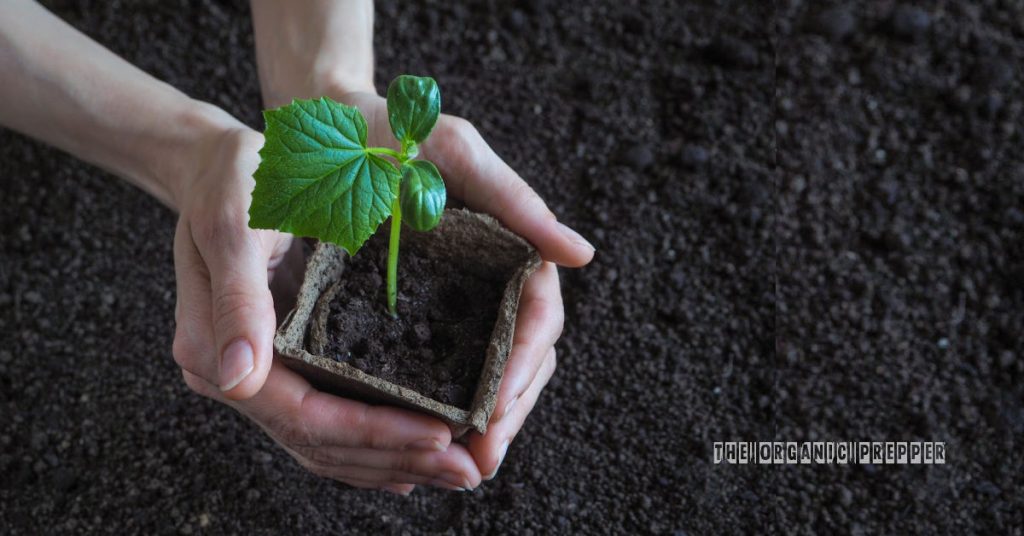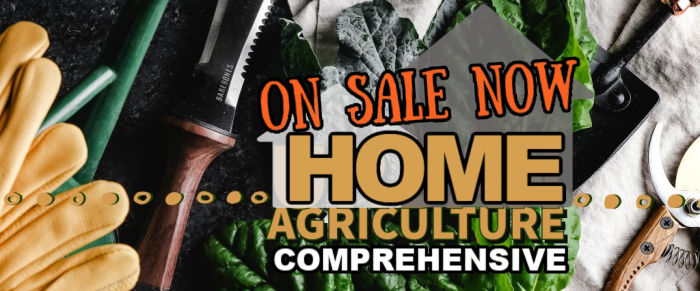If you're new here, you may want to subscribe to my RSS feed. Thanks for visiting!
As time goes by, when you’re growing your own food, you’ll become more aware of the cycles of nature. Everything from the weather to the wildlife in your garden takes on a new meaning. You’ll take more notice of things such as insect predation. Weather is a huge big deal, especially since the lovely days of Spring can quickly turn into a storm strong enough to destroy all you’ve worked to accomplish.
And yet, we must plant our garden in order to harvest the food from it. So how do we decide when the time comes to plant our precious seedlings outside and let Nature take its course? I’ll discuss that in this article.
Four big factors go into this decision: last frost date, soil temperature, seedling readiness, and, yes, the immediate weather forecast.
Are your seedlings ready?
Readiness of seedlings is very easy. How old are the seedlings, and have they been properly hardened out? You’ll want your seedlings in the 8-12 week old range. If you’ve purchased them, then they’re likely of proper age and ready to face the weather. For newer gardeners, hardening out is the process of getting your seedlings ready to deal with the great outdoors.
Seedlings that have been started indoors need to be acclimated to sunshine, wind, and rain or they’ll die very quickly. Hardening out is done by placing your seedlings outside for increasing amounts of time, exposing them to those conditions. The process usually takes 1-2 weeks. I put my seedlings out for 1 hour the first 2 days, then double that time every 2 days until the seedlings are staying out all night.
Temperatures do have to be appropriate to the plants. Specifically, frost-sensitive items such as tomatoes and peppers need daytime temperatures in the 60-80F range and nights no cooler than 50F, preferably a touch warmer. More frost-tolerant things such as brassicas (broccoli, cauliflower, cabbage, and kohlrabi) can deal with nights in the 40s. If you’ve got anything cooler than that in your forecast, I wouldn’t put your plants out overnight. A hard freeze, defined as temperatures in the high 20s or less, is a definite no-no!
It’s OK if you don’t put plants out every single day. As I type, the last 10 days of 70s in my area have given way to the 50s, along with rain and snow in the forecast. My seedlings got a 45-minute drink and are back on the shelf. My overwintered pots are outside but will be brought back in due to low nighttime temperatures. The seedlings are somewhat hardened out but not fully, and therefore aren’t ready to be planted in the garden.
What is your soil temperature?
Potatoes are a frost-tolerant crop that actually prefers cooler weather, and the soil temperature in my garden was 56F. So I did, however, plant my potatoes yesterday.
The minimum soil temperature for planting potatoes is 50F. I also dug down 6 inches to where the seed would actually be sown for my measurement. I once learned the hard way that 48F wouldn’t cut it. Soil temperature has to be 50+F and not one degree less! More is better. My potatoes that year were runted at best, and many of the seed potatoes didn’t even sprout.
Tomatoes and peppers prefer soil temps in the 60s. That’s the problem with cool soil temperatures: the seed will often rot in the ground, producing nothing.
Plants transplanted into cool soil will be runted and produce little if anything. Soil temps can be measured using a soil thermometer, easily available online or possibly at your local garden center.
What’s the weather forecast?
So how about that weather forecast? Eventually, the garden will experience severe weather, and the plants will just have to deal with it. However, in the beginning, I want to give my plants the best edge possible, so I try to choose a planting day that gives them a 7-10 day stretch of decent weather. Even hardened-out plants need to adjust to being in the ground!
It’s a huge change, so picking your weather as carefully as possible is a must. One year I was all set to plant potatoes in mid-April. The soil temps were right, and everything was a Go. The weather forecast mentioned a spring storm coming that weekend, so I put things off for a few days. We actually got Blizzard Evelyn. My potato planting plans were exchanged for moving nearly 30 inches of snow. Soil temperatures dropped, and any plantings were put off for a good month that year. The weather forecast matters!
What are your local frost and freeze dates?
Frost and freeze dates are extremely important to the gardener. These vary according to grow zone, and there’s more than one grow zone system. Here in the US, we use the USDA system. You can find your grow zone by simply typing the phrase USDA grow zone along with your zip code into your favorite search engine. (Here’s a link with a calculator.)
Once that’s known, you can learn what the average frost and freeze dates are for your area. I live in the upper end of zone 5B, and my average last frost date is typically Mother’s Day or around May 10th. However, it’s not uncommon here to hold off on planting the more frost-sensitive stuff, such as tomatoes and peppers, until Memorial Day. Yes, we’ve been known to get snow and a hard freeze in May! Where my precious seedlings are concerned, better safe than sorry.
There’s so much to learn!
As you grow in gardening knowledge, it’s useful to learn which plants are more frost-sensitive vs. frost-tolerant. Seed packets will usually give this information, but what if you’re saving your own seeds? Then it’s better to know.
It’s also useful to learn which plants transplant well vs. those that are best direct-seeded. I learned about the latter this year, thankfully, the easy way! I’m going to try corn for the first time, and my original garden plan called for starting it indoors. While researching how to grow it, I ran across many mentions of corn not transplanting well. I checked with some other gardeners I know that grow it, and they assured me this information was correct. Corn is best direct seeded. My plans changed accordingly.
Object lesson: research is a good thing. Gardening is a forever learning process, and learning is a good thing too. Garden and learn!
Speaking of learning, if you want to go more in-depth in your garden this year, check out our Home Agriculture Comprehensive course!
What is your agricultural zone? How do you decide when to plant your seedlings outdoors? What experiences have you had? Tell us in the comments section!
About Amy Allen
Amy Allen is a professional bookworm and student of Life, the Universe, and Everything. She’s also a Master Gardener with a BS in biology, and has been growing food on her small urban lot since 2010.

















I have been learning when to plant the garden based on what trees, plants and animals are doing. For instance, I plant corn when the oak leaves are just starting to come out. When the corn is up, I plant beans. When the beans are up, the soil is warm enough to plant squash, pumpkins, and melons.
Three Sisters planting! That’s pretty cool. Gardening does tune us into the cycles of Nature, doesn’t it?
Do you ever use season extenders?
Sometimes. When I first started gardening, I’d use cold frames and other methods to get my seedlings out a bit earlier and leave them out a bit longer. While these can be good things for seedling starting, I never found enough of an increase in the harvest to continue the practice. Also in my area, gardening through the winter using these would generate an incredible heat bill because without a heating source, these things won’t work in subzero temperatures. Most gardeners I know put up what they can before the first hard freeze and let the garden go after that.
However, a temporary cold frame can save tender seedlings from rabbits until they’re established. Milk jugs painted black and an old sheet can help deal with cool nights and shade cloth is almost a must in the hot Southern gardens. It depends.
Yes! Old bed sheets are perfect for covering young seedlings already planted with forecast of nightime temps. in the 40’s. Simple to pull of next morning when things (hopefully) warm back up.
Yup! Add the black milk jugs filled with water and you have a very nice micro-environment. I put my jugs out during the day so they absorb the heat. At night, they release the heat they’ve absorbed and the sheet helps keep that heat near the plants. It works very well and costs only the time & effort.
I didn’t plant seedlings as I have no room in my home
. I’m starting from seeds sowed into topsoil with compost mixed in. I got lettuce, okra, tomatoes (cherry) and basil. I want to get some plants from the garden center so we have enough variety. I would love to know how to plant potatoes as I have never done them before. Any tips would be greatly appreciated.
Potatoes are directly seeded using seed potato. Your garden center may have some. I wouldn’t recommend buying seed potato online because it’s horribly expensive! And you can use potatoes from your kitchen although many of those are sprayed with an anti-sprout chemical.
Basically, just drop the seed potato 6 inches down into a hole. Cover it, water it, and it’ll grow. If you’re cutting your potatoes into pieces, make sure each piece has at least one eye. Potatoes prefer it cool so the plants will flag a bit in the heat of summer, especially if you’re in a really warm area. They come in both determinant and indeterminant types. Harvest around mid-September or so. I enjoy harvesting potatoes. It’s a lot like digging for treasure! Good luck.